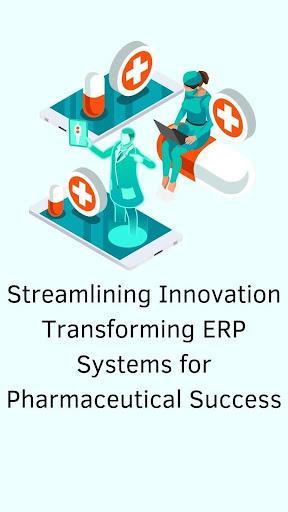
In this digital world, Sreeharsha amarnath rongalaa renowned innovator and thought leader in pharmaceutical ERP systems, sheds light on the groundbreaking advancements reshaping enterprise resource planning (ERP) systems in the pharmaceutical sector. His latest research explores how emerging technologies, including artificial intelligence, modular architectures, and low-code platforms, are redefining traditional ERP frameworks. These innovations address the industry’s unique challenges, ensuring seamless adaptability, enhanced compliance, and operational efficiency in an increasingly complex regulatory and manufacturing environment.
The Shift Towards Modular ERP Designs
Traditional ERP systems, while foundational, often required extensive customization, resulting in inefficiencies and delayed adaptability. Modern modular designs offer a solution. These systems emphasize flexibility through microservices architecture, allowing pharmaceutical companies to scale operations seamlessly. The implementation of these components has reduced system downtime significantly organizations report only 1.8 hours of planned maintenance per month, ensuring uninterrupted manufacturing.
Low-Code Platforms Revolutionizing ERP Customization
Low-code/no-code platforms are democratizing ERP customization, empowering business users to implement system modifications independently of technical teams. This innovation has led to an 82% reduction in development time, enabling organizations to deploy new workflows within days instead of weeks. By leveraging visual design tools, users can now ensure compliance and operational efficiency across multiple sites without relying on traditional programming expertise.
Harnessing Artificial Intelligence for Optimization
AI-driven ERP systems have redefined efficiency in pharmaceutical manufacturing. By processing over 18,500 workflow patterns hourly, AI systems identify optimization opportunities, cutting compliance delays by 65%. Neural networks have also bolstered predictive maintenance capabilities, forecasting potential system failures up to 85 hours in advance and ensuring smooth operations across production lines.
API-First Integration for Enhanced Connectivity
Modern pharmaceutical ERP systems are built on API-first architectures, supporting seamless integration across diverse platforms such as Laboratory Information Management Systems (LIMS) and Quality Management Systems (QMS). With an average uptime of 99.98%, these systems enhance data synchronization and reduce quality review cycles from 84 hours to just 6.2 hours.
Automated Compliance and Validation Frameworks
One of the most critical advancements is in automated compliance. Contemporary ERP systems now process over 14,200 regulatory checkpoints daily, achieving a 99.92% accuracy rate. This automation has significantly streamlined validation processes, reducing documentation efforts by 94% and accelerating regulatory audits.
Real-Time Adaptive Interfaces Enhancing User Experience
Adaptive interfaces driven by AI are revolutionizing user interactions with ERP systems, simplifying processes while boosting efficiency. These advanced interfaces cut training requirements by 64% and improve task completion rates by 82%. Additionally, role-specific dashboards deliver instant access to essential data, enhancing decision-making speed and accuracy by 71%, significantly elevating overall productivity and user experience.
Future Directions in ERP Innovation
As ERP systems continue to evolve, integrating cutting-edge technologies like machine learning and advanced analytics promises to redefine operational efficiency and predictive capabilities in the pharmaceutical industry. Machine learning will enable real-time optimization of workflows, identifying potential issues before they occur, while advanced analytics will offer deeper insights into data, driving informed decision-making. Future advancements will focus on autonomous system optimization, where processes self-adjust to ensure peak performance. Seamless integration with next-generation tools will further enhance functionality, while sustained compliance with global regulations will remain a priority, ensuring that businesses stay competitive in an increasingly dynamic landscape.
In conclusion, the innovations highlighted by Sreeharsha amarnath rongala mark a pivotal shift in the evolution of pharmaceutical ERP systems. Through the integration of modular designs, artificial intelligence, and low-code platforms, these advancements empower organizations to streamline operations, enhance regulatory compliance, and adapt swiftly to industry demands. By embracing these transformative technologies, pharmaceutical companies can achieve superior efficiency, maintain compliance with complex regulations, and sustain a competitive edge in a rapidly evolving landscape.